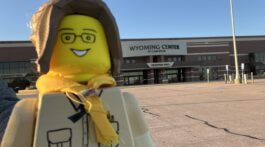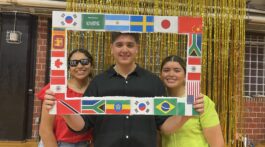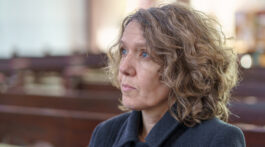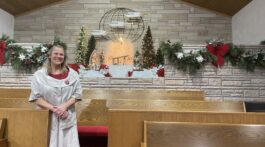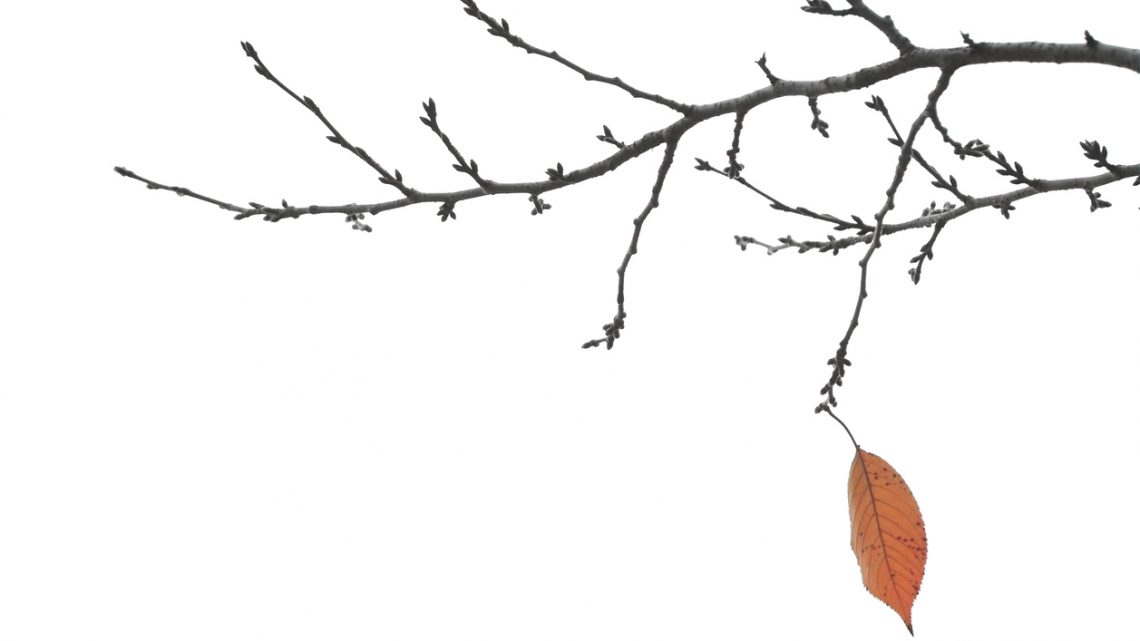The skeleton of the tree looms above me. I trace the branches with my eyes, marveling at the beauty that partially covers my view of the sky. I dream of spring, dream of when the leaves will be out and the tree will be a canopy of green over my head. But it is not spring. Not yet. It is winter. And green is nowhere to be found. The truth is, I am taking advantage of a semi-warm day to run my salt-covered car through the carwash. Waiting in line, I look up through my moon roof and see the tree I now gaze at in all its glory. I look closer, moved by its lines. I follow its frame and notice not only the obvious but also the delicate. The tree’s arms have branches, the branches, twigs, each finger reaching for the sky.
I think to my stick figures I draw on the whiteboard at school to demonstrate to my students a word that is difficult to describe. As an English as a Second Language teacher, I am often called on to be an artist. Where words fail me, where vocabulary is stretched thin, a simple drawing or stick figure is enough to make my point. I have taught the word “branch” before. I draw my stick tree—a trunk, then a few branches, with a bushy top to finish it off. My students nod when my feeble attempt at art hits home and the idea I am trying to convey dawns on them. Then we move on. But I am not moving on quite yet, as I look at the tree towering over me.
If it weren’t for the twigs, the leaves wouldn’t have anything to attach to. The thought isn’t particularly profound, but when I think of my stick tree, I never include the twigs. Usually, I have two or three branches to make my point, nothing more. My thoughts start to travel further down the path they are on, and I struggle to keep up with them.
“The body is a unit, though it is made up of many parts; and though all its parts are many, they form one body. So it is with Christ…. Now the body is not made up of one part but of many. If the foot should say, ‘Because I am not a hand, I do not belong to the body,’ it would not for that reason cease to be part of the body. And if the ear should say, ‘Because I am not an eye, I do not belong to the body,’ it would not for that reason cease to be part of the body. If the whole body were an eye, where would the sense of hearing be? If the whole body were an ear, where would the sense of smell be? But in fact God has arranged the parts in the body, every one of them, just as He wanted them to be. If they were all one part, where would the body be? As it is, there are many parts, but one body. The eye cannot say to the hand, ‘I don’t need you!’ And the head cannot say to the feet, ‘I don’t need you!’ On the contrary, those parts of the body that seem to be weaker are indispensable, and the parts that we think are less honorable we treat with special honor. And the parts that are unpresentable are treated with special modesty, while our presentable parts need no special treatment. But God has combined the members of the body and has given greater honor to the parts that lacked it, so that there should be no division in the body, but that its parts should have equal concern for each other. If one part suffers, every part suffers with it; if one part is honored, every part rejoices with it.” (I Cor. 12:12, 14-26)
Why don’t I ever draw the twigs? The thought bothers me a little. I show my students the “big picture” and leave out the other. But it really isn’t about my stick drawing anymore, is it? I reflect again on the verses about the body of Christ.
As a single woman in my church, I realize I am somewhere in this body. I am not particularly sure of which part I compose, but I know that I belong. I know that I have something to contribute. When I look around me in the church praise group I play with, I see a collection of the body. It is comprised of young adults in college, as well as married adults with kids and those married without them. It is made up of men and women, sometimes even children. We make music together, sing praises to our God who made this “body” of ours. We all belong, whether we sing or play instruments, simply relishing in the beauty of making music to our Maker.
I am part of that body. I belong.
When I look around me in my Bible study group, I also see parts of the body. I am the only single person there now. The others are married with kids or engaged, soon to be married. We are a body composed of those with greater wisdom by years of experience and those who are still on the way to becoming wiser, but I am a part of that body. Each time I open the Word and lead out, I am a part of the body. Each time I am fed by another, I am also part of the body. I belong. And I have something to contribute. Without me, the body would be incomplete.
I have to remind myself of that truth sometimes, because society often urges me to draw the “big picture” and leave out the “other.” I am often the “other.” Maybe I am a twig… It is easy to miss the twigs, to gloss over the little fingers that grasp the leaves that dance softly in the breeze. But the twigs anchor the leaves, allowing them to flutter without falling, dance without blowing away. Still, that doesn’t make the leaves any less beautiful. After all, I am waiting for spring, waiting to see the green again, where I will rejoice at its birth. At the same time, that doesn’t lessen the impact of the trunk, holding each part together, giving security, stability, and strength to the whole. That also doesn’t negate the need for the branches that can sway, adding to the rhythm of the body, yet sustaining it in the storms. And it doesn’t minimize the seeds that will form yet other bodies, other trees.
Each part is unique. Each member is special. Each is necessary. So am I—where I am at in life, even now.
I look at the tree once more, outlining each part of it, noticing its beauty. The car ahead of me moves. I sigh and move forward. Spring is coming, yes, but for now, I will enjoy my winter canopy and pause under the twigs and the branches, await the seed and the leaves, and sit at the base of the trunk, rejoicing.
Laurel McClelland teaches English as a Second Language at the University of Nebraska-Lincoln.


